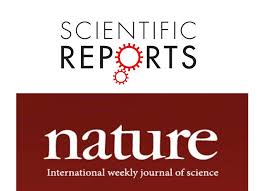Injectable “goo” could eliminate joint surgery, treat osteoarthritis, animal study shows

Editor's Note A newly developed biomaterial could treat crippling arthritis by prompting the growth of new cartilage, according to an animal study conducted at Northwestern University and published in the Proceedings of the National Academy of Sciences. According to an August 6 article by U.S. News and World Report, the…
Study: Healthcare workers more susceptible to debt than those in other industries

Editor's Note Extensive training and lower wages lead healthcare workers to accrue more debt than those in other industries, according to a recent analysis published in JAMA Health Forum. Findings were based on 2018-2021 data from U.S. Census Bureau’s Survey of Income and Program Participation. According to an August 5…
Propofol study shows how consciousness research could improve anesthesia safety

Editor's Note Propofol research published in the journal Neuron has broader implications for enabling more precise, safer doses of anesthesia, according to an August 14 report in Anesthesiology News. According to the article, anesthesiologists tend to use higher doses of anesthetics because they rely on indirect measures, such as heart…
Study: Uterus transplant associated with high birth rates, but significant risks

Editor's Note Uterus transplants are feasible, but the procedure is associated with considerable risks for both patient and organ donor, according to a study published August 15 in JAMA. Conducted at a large US tertiary care center, the study involved 20 women with absolute uterine-factor infertility—a condition that prevents…
Study compares renoprotective effects of metabolic bariatric surgery, GLP-1RA

Editor's Note For diabetic patients with obesity and chronic kidney disease (CKD), metabolic bariatric surgery could protect the kidneys better than therapy with glucagon-like peptide-1 receptor agonists (GLP-1RA), according to research published in the September issue of the Annals of Surgery. Conducted at a large US health system, the study…
COVID deemed endemic, death rate drops

Editor's Note COVID-19 can be considered endemic worldwide, The Centers for Disease Control and Prevention (CDC) announced on the heels of reporting a drop in overall US death rates from the disease. CDC’s classification of the disease as endemic “means, essentially, that COVID is here to stay in predictable ways,”…
Study reveals how OR ventilation, patient positioning impact surgical site infection risk

Editor's Note Optimizing patient positioning can help reduce the risk of surgical site infections due to airborne contaminants in positive-pressure ORs, according to a study published August 12 in Nature: Scientific Reports. Maintaining higher pressure than adjacent spaces prevents entry of contaminants from environments external to the OR. For this…
Anesthesiologists sound alarm on wildfire smoke, surgical outcomes

Editor's Note The rising frequency of wildfires has anesthesiologists concerned about potential for adverse surgical outcomes to exposed patients, according to an article in the Online First edition of Anesthesiology, the peer-reviewed journal of the American Society of Anesthesiologists (ASA). As of an August 6 report from ASA, nearly 100…
Study: Debriefing documentation improves OR communication

Editor's Note A study published August 6 in the journal Surgery highlights the impact of structured debriefing tools on improving communication and patient safety in the OR during the COVID-19 pandemic. Conducted over three years, the study implemented a new electronic health record (EHR) module to document surgical debriefings and…
Study: COVID infection negatively impacts surgical outcomes

Symptomatic SARS-COV-2 patients undergoing surgical procedures experience significantly higher 30-day in-hospital mortality, ICU admission, longer ICU and hospital stay, and pulmonary complications, according to a study published August 1 in the Journal of PeriAnesthesia Nursing. Researchers analyzed a year’s worth of records of 102 infected surgical patients and those who…

 Free Daily News
Free Daily News